Media | Articles
10 automotive terms that muddy fact and fiction
This story originally ran on this site in November of 2019. It’s reproduced here, with minimal changes, as a riff on the same theme as this 2023 story examining the origins of the GMC name. That piece proved popular, telling us that you have an appetite for accuracy. Cheers to that! — Ed.
Considering how frequently I cringed during my decades as a technical editor at car magazines, it’s a wonder I didn’t develop a nervous tic. There’s a lot of misinformation and nonsense out there among non-experts who parrot certain phrases or terms, without really understanding what they mean. Here are my favorite cringe-worthy gaffes.
All-aluminum engines
I don’t believe any engine manufacturer has made a crankshaft out of aluminum. Same goes for piston rings, exhaust valves, and the fasteners tying everything together. I suspect this expression originated in England as lazy shorthand to describe an engine with an aluminum block and head(s).
Steel brakes
Brake rotors are made of cast iron or, in some cases, carbon-ceramic material which begins as a mix of carbon fibers bound with special resin. Cooking that blend for an extended period in a vacuum yields a ceramic material that’s excellent for stopping race cars and supercars. For more affordable cars, grey iron provides the best heat transfer while ductile iron’s higher strength is preferred for vented rotors. Motorcycles are a special case where stainless steel discs sacrifice some performance while avoiding unsightly rust caused by splashing through puddles.
Anti-sway or stabilizer bar
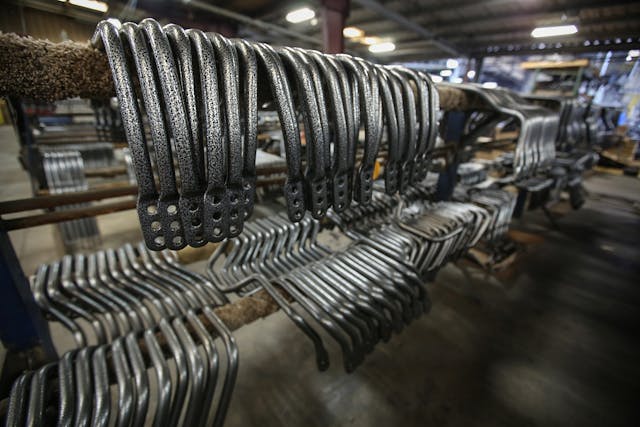
This transverse steel rod linked to your suspension system twists to resist body roll in turns. That’s why it’s most accurately called an anti-roll bar. Worried that you’d fret over your car tipping over, manufacturers coined meaningless alternative terms.
Marketplace
Buy and sell classics with confidence
“Perfect” or “ideal” weight distribution
BMW and others would have you believe that 50:50 front-rear is the correct answer. Generally speaking, it’s not. Front-wheel-drive cars perform better with more than 50 percent of their weight carried by the front wheels and vice-versa for rear-wheel-drive rides. Cars with four-wheel drive have a more agile steering response with a rear bias. The ultimate balance depends on several factors: center of gravity height, polar moment of inertia, tire size stagger, and spring and damper rates, to cite a few. Supercars like Chevy’s mid-engine C8 Corvette, for example, typically carry roughly 65 percent of their weight on their rear tires to optimize acceleration, cornering, and braking performance.
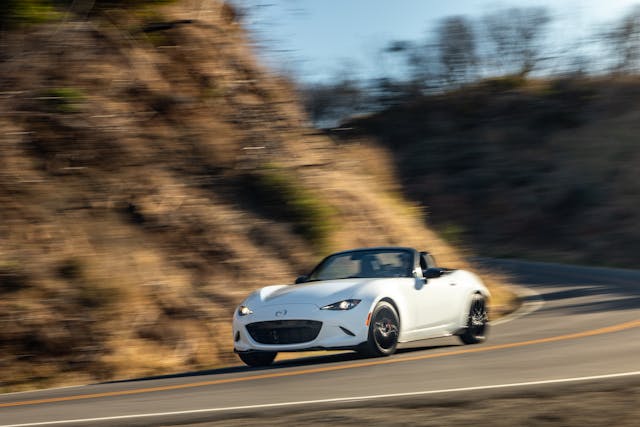
Strength vs. Stiffness
Car parts that lack sufficient strength will fracture—as in actually crack or break in two. Ideally, that occurs only during severe collisions. Insufficient stiffness means that a suspension member, the body structure, or some other crucial part deflects too much under normal loading, impairing ride quality and handling precision. Every steering system component must be stiff to transport the subtle but useful feedback forces from the tire contact patches to the driver’s hands.
AWD vs. 4WD
This confusing construct was created to distinguish vehicles that employ four wheels for propulsion all the time from those with the means to manually engage a second drive axle when the road is slippery or non-existent. AWD can signify full-time four-wheel drive (such as most Audis and Subarus). Many modern AWD systems have intelligent controls that engage the second axle automatically and temporarily when slip is detected at the primary drive axle. Most AWD vehicles have a third center differential to accommodate the rotational speed differences that exist between the front and rear axles, though the extra diff isn’t needed with automatically engaging AWD.
4WD indicates part-time maximum traction (Jeep Wrangler), often used in vehicles where the driver can select 2WD or 4WD modes with a switch or a button. 4WD is a common feature of modern pickup trucks and heavy-duty SUVs.
Exemplary Aerodynamics
Carmakers love to tout low drag coefficient (Cd) figures to celebrate how readily their bullets pierce the wind. Lower is always better and any Cd below 0.30 is cause for popping a champagne cork. But before you begin swilling the bubbly, understand the rest of the equation. What really matters is drag area, the product of a car’s drag coefficient multiplied by its frontal area (CdA). In other words, a large slippery auto may perform no better than a tidier one with a higher drag coefficient.
Torque vs. Horsepower
This is an epic battle intensified by today’s onslaught of battery-electric cars. First, let’s distinguish between static and dynamic torques. Static torque is what you apply to your engine’s head bolts during a rebuild and is indicated by the dimensional units foot-pounds (or ft-lbs). To cinch the bolts at 100 ft-lbs, you apply 50 pounds of force to a two-foot-long wrench.
Dynamic torque is the rotating force that exits an engine’s crankshaft. The preferred units are pound-feet, lb-ft, or newton-meters if you’ve made the metric leap. When you see units misquoted as lb/ft by some witless writer, please pen a scathing letter to the editor.
Eighteenth-century inventor James Watt observed that a horse powering a sawmill needed one full minute to hoist a 33,000-pound load one foot upward. He defined that work as one horsepower. In his honor, the metric expression for work is kilowatt.
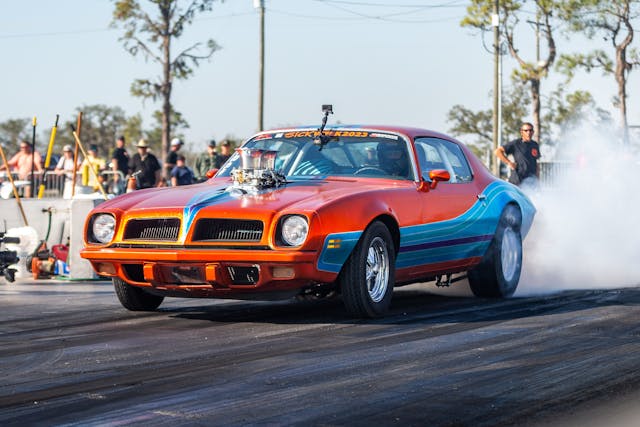
In the greater scheme of things, the amount of torque produced is proportional to the quantity of air flowing through the engine (or the size of an electric motor). The goal is maximum torque at the lowest rpm with the ability to sustain that output for as long as possible. The torque plot for a perfect engine or motor (none exist) would consist of a straight line from idle to the redline—the so-called “flat torque curve.”
Torque versus horsepower discussions inevitably devolve into a debate of which is better. The answer depends on your driving style. If you have an automatic transmission and you hesitate to downshift passing a car in traffic, you want right-now torque—the more the better. Any Tesla Model S or Chevy Bolt owner will spout chapter and verse about the instant torque they enjoy in daily driving. But if you’re a more aggressive driver who dwells at the upper half of the tachometer’s sweep, horsepower is your best friend. Your engine’s bottom range is merely for backing out of the garage. Your throttle is the trigger that unleashes more rpm and maximum power. Bottom line: torque is for painless tooling around, power is what gets you home in time for dinner.
Weight Transfer
Your car’s weight is a vector—a force proportional to its mass directed toward the center of the earth. Think W = mass x g, with g as the acceleration due to gravity. Your car’s mass permanently resides at its center of gravity (C of g), varying only in three specific instances. Its map coordinates change as you drive to work. And your car’s weight diminishes as you consume fuel or drop the kids off at school. During the body’s roll and pitch motion, the C of g also moves slightly from its static location.
What’s popularly (yet erroneously) known as weight transfer is more accurately described as load transfer. Drive around a corner and some of the load borne by the inside tires is “transferred” to the outboard tires. Step on the brake and the rear tires are unloaded while the front rubber is squished more firmly into the pavement. The opposite happens during acceleration. The amount of load transfer depends on the severity of the maneuver and the height of the car’s center of gravity which, as noted above, moves little during the tires’ tap dance on the pavement.
Where the rubber meets the road, dynamic forces point in three different directions. The share of the car’s weight a tire carries, diminished or augmented by load transfer, presses downward on the vertical axis. Increasing the vertical load applied to any tire increases traction—its ability to produce fore and aft and lateral forces. In the horizontal plane, the fore and aft axis represents the acceleration or braking force produced by the tire. Cornering forces reside in the horizontal plane on the lateral axis.
Venial sins of nomenclature
The term “crossover” was coined to describe a blend of car and truck components and traits. Like “wagon” and “SUV,” the crossover label has by now run out of gas. The same is true of import versus domestic ID tags. Given the car business’s world scope, distinguishing between a Ford Fiesta manufactured in Mexico and a Honda Accord made in Ohio is fruitless.
***
Check out the Hagerty Media homepage so you don’t miss a single story, or better yet, bookmark it. To get our best stories delivered right to your inbox, subscribe to our newsletters.
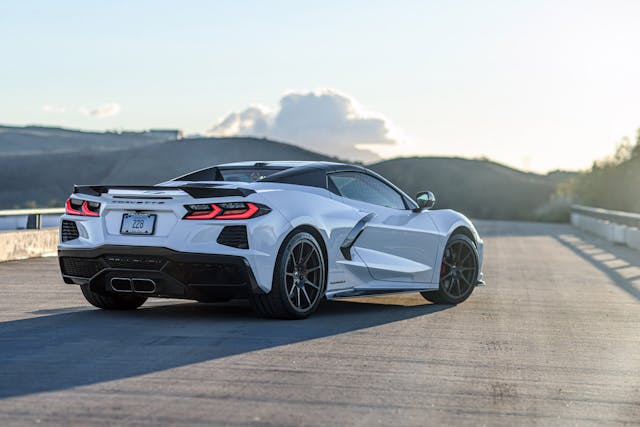



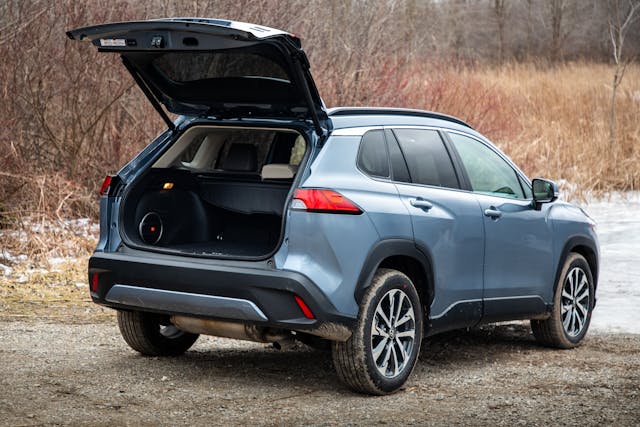








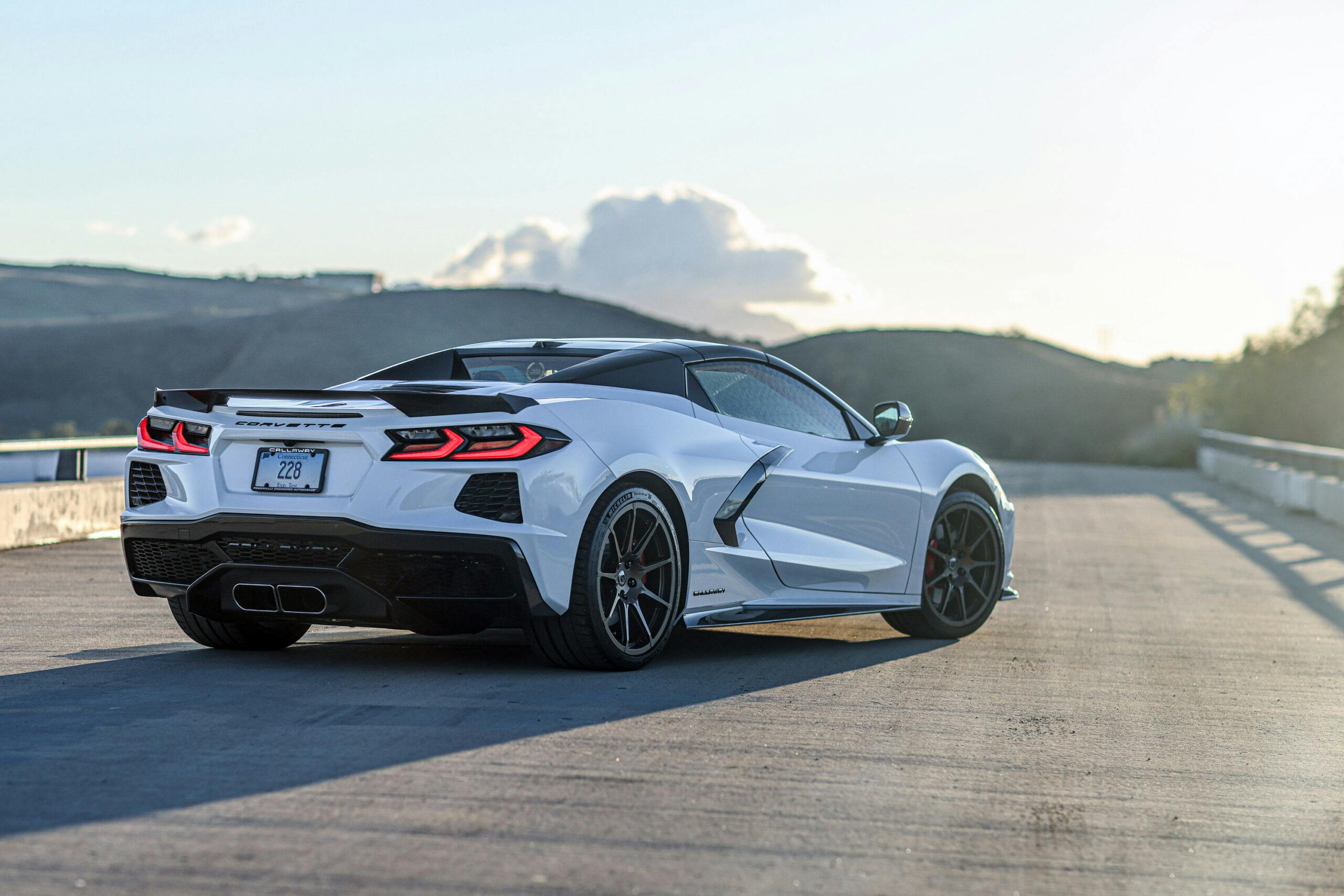
If only this piece would be required on all driver’s license tests! 😀
Cops know the difference between torque and horsepower.
Torque gets you tickets for excessive noise, losing traction when accelerating, loss of control (doing donuts).
Horsepower gets you tickets for triple digit speeding, fleeing and eluding, and reckless endangerment.
It’s quite simple.
or….. high torque pulls tree stumps…. high horsepower pulls court dates…..
Perfect definition for the general public which is easily swayed by ads and salesmen using such terms as part of a word salad.
Love it!
Horsepower is how fast you hit the wall and torque is how far you drag the wall with you.
Inaccurate, perhaps, but entertaining!
Well, THAT gave me a chuckle…I LIKE it !
Torque is how quickly you get to 60, horsepower is what your top speed is.
Well said.
Torque FEELS fast, horsepower IS fast.
Hahaha!!! Very good. Thaks for sharing that wisdom so beautifully expressed.
Horsepower is how fast you hit the wall and torque is how far you push it.
F=ma is how far you push the wall.
Well, KE=1/2mv^2 is the kinetic energy input into the encounter with the wall, if you really want to get down in the weeds:-) Let the geekdom begin!
@Tom- You have gone above my pay grade. Well played!
Sorry Lon…..I posted before I saw the comments. I think that quote was from Dale Earnhardt, had you heard that?
Many things in the auto area are counter. Like over steer and under steer.
The weight balance deal is a messy one. 50/50 is only a small part of the deal. You also want the weight low and you want it centered as much as possible. This is not only in the case of handling but when we raced a Soap box derby car. Though we would push a little weight rear ward to gain a little more push off the hill with the weight higher up the hill. It will push the car an extra 2 feet. But too much will slow you on the flat part of the track. It is all physics.
GM nearly did an all aluminum engine with their try with no steel liners in some race engines and the Vega. But we know how that came out. No the crank was never a consideration.
As I have said Torque is what you feel and HP is what you hear.
Torque does all the work like lightning. HP is like thunder just the noise.
I have to wonder if the Vega’s engine would have been more of a success if we had the synthetic oils we have these days and the oils were the OE oil used and recommended by GM at the time. I had a new “71 Vega, manual 3 speed, that I changed to oil and filter using Castrol 20-50 every 3000 or so miles and had no problems putting 120,000 miles on the car before selling it. I did change the timing belt and clutch along with normal wear items such as brake pads, rotors and tyres. These were the only things, that I remember, I had to do to the car. Also, no Body rust.
Ummm, no. The radiator was too small ( coolant volume & square inch – fin area ). It was also positioned a bit too low due to hood design. If it was down on coolant, just slightly, air pockets would develop causing hot spot spots.
Next the lack of quality cylinder coatings on the early cars, or electing to use pressed in steel liners from the beginning all contributed to a very short life
While modern oils are light years ahead
It wouldn’t really have helped overcome poor execution of product
Right. I had a 1971 Vega with the base radiator. The cylinders wore out quickly. My brother had a 1972 Vega equipped with the optional/larger radiator and battery. It never wore out the cylinders. I think the optional radiator and battery combo added about $20 to the price of the car. If I had only known…
It very well might have.
The friction on the aluminum was too much for the silicone in the block to lubricate.
People can say what they like the engine for the most was a very good engine. If they had steel sleeves it would have been remembered in a much different way.
Other than oil use they always started and ran. And ran well at that. These things made great nester cars as in school we just dumped used oil in them from auto shop. -25 below they always started.
Not surprised about the clutch. Those 3-speeds were stock-geared way too high (maybe about 2.56-to-1?); a local guy had one, and it required a lot of clutch slip on any kind of slope, just to get it moving. Seemed to me kind of like a 4-speed with 1st gear missing.
I drove a 1973 delivering medicine; it had the Turbo-Hydramatic, and was easy to drive, if rather slow (although it could outrun my 1500 Beetle 4-speed, after both reached about 30 MPH).
Good info on extending the life of the Vega. Frequent oil/filter changes are the path to longevity for any car, IMHO. I always liked the looks and idea of the Vega, but had no real-life experience. However a friend invented new swear words over the shift linkage on his.
At one time, Mercedes and I believe BMW were paying GM to use the aluminum cylinder technology in their engines. There was nothing wrong with the basic idea of the Vega engine, the execution left a bit to be desired. I believe much of the problem was an inadequate cooling system that led to overheating and warped cylinders.
Spot on. Equipped with the optional HD radiator and HD battery combo option, there was no cylinder wear problem. Few people knew that.
But your description of HP v. torque is at odds with the author’s, which is more consistent with what I have read in enthusiast publications for over 50 years. What is really correct?
With the article and all the comments, I’m convinced I’ll just never really, truly understand the difference between HP and torque.
Torque defines the ability to do a specific job. Horsepower adds the time element; how fast it can be done.
Torque can be multiplied by gearing and if you ignore friction, any body could move anything. If you have a certain amount of time that you want to move that thing, you need more horsepower.
Torque is the measure of twisting force while horsepower is the ability to do work. Horsepower increases if torque is increased or if the RPM ( engine speed) is increased, or both RPM and torque are increased. Higher RPM has more inertia than lower RPM. That is why if measured with the same amount of torque, more horsepower will result. Torque is important and under rated when it comes to useable power. Drop a heavy hammer on a nail and it will drive the nail into wood a fair amount. To drive the nail the same distance with a lighter hammer, you need to swing the hammer fast (RPM). I hope that helps explain it.
So the real truth is that horsepower is a calculation, and torque is a measurement. HP=(TQxRPM)/5252. This is why the dyno graph lines converge at 5252, always.
Yep. Horsepower is just a calculation of how much work your torque is doing at what RPM. A huge irritation for me is that farm tractor manufacturers always brag about the horsepower of their engines, when the only thing that matters is the torque that is needed to drag an implement through the ground.
Amen. Kinda left that out of the explanation. Can get the same HP number out of different combinations of torque and rpm. Torque values typically peak somewhere in the RPM range, depending on a combination of physical properties, air-fuel charge, timing, etc.
Horsepower typically increases throughout the rpm range in IC engines.
Thank you! The notion that torque and hp are two seperate competing concepts is crazy!
I just want to stop all the idiots from using RPMs when what they mean is RPM. RPM is already plural since it means RevolutionS per Minute. RevolutionS per MinuteS is meaningless and just makes you sound stupid to all of us engineers and legitimate car experts in the world. When I see some dolt talking “RPMs” in some forum I immediately stop reading because he obviously doesn’t know squat.
Can we also stop using “RPM” as a verb? As in “the engine pulls hard off the line but it won’t RPM.” When someone says something like that, I mentally deduct 50 points from my estimate of their IQ. Besides, it’s harder to say than saying “…but it won’t rev.” 🙄
I’ve never heard anyone use RPM as a verb. But I’ve heard people call NASCAR stock cars NASCARs. That’s even dumber. Or maybe just as dumb.
As a medical editor, I’ve learned that any noun can be verbed.
Love this article and these comments!
NASCAR hasn’t had stock cars for decades.
That is absoloutley correct sir.
.. when EVERYone knows they’re properly called taxis.
Don’t for get the VIN Number or the ATM Machine!
Of course, you can’t stop the idiots. They will continue to mispronounce and misspell, and if you try to correct them, they ask ‘who cares?’. For example, using apostrophe’s for plural’s is a modern plague that seems to have no end. What gets me is that most are lazy (generally not even using capitals or punctuation elsewhere), and that’s an extra key or pen stroke!
It makes the pressure in my head go up 20 pounds psi!!
Wait….. you mean there is no number that identifies the VIN? You’ve just blown my mind!
Those people generally work at the Department of Redundancy Department.
(Credit to Firesign Theater on their classic 1970 album “Don’t Crush That Dwarf, Hand Me the Pliers”).
Yes, but if you remember, acronyms were supposed to be pluralized with apostrophes, but now considered optional or even archaic.
I always used to apostrophize acronyms. But stopped when I saw few others doing it on the web.
It used to be that the possessive of the name ” Dennis ” was ” Dennis’ “. Now I am told it is ” Dennis’s “. I can hear my 8th grade grammer teacher screaming:
“It’s a mad house!”
You always have to remember that language like everything else can’t be made idiot or foolproof…as both idiots and fools are an ever improving breed. God help us from the dumbing down of our society.
Nothing is idiot/fool proof to a sufficiently motivated idiot/fool…
Insurance agent here, I use “VIN number” simply due to the fact that so many people don’t know what a VIN is. Neither “vee eye ennn” nor “vehicle identification number” roll off the tongue quite as well.
WHO CARES ?????
Good one, Dan.
Same applies to the baseball term RBIs. It’s already plural – RunS Batted In.
Trying to concoct some “fundamental” difference between crankshaft torque and head bolt torque is the biggest fiction here, and reveals who is and isn’t an engineer. Torque is a measure of twisting force…. PERIOD. The only thing different between a torque on a torque wrench and torque on a crankshaft is frame of reference. If the crankshaft is viewed in a frame of reference attached to the crankshaft, then torque observed at its flange looks just as “static” as if it were a head bolt. There’s no difference between ft-lb and lb-ft. Unless you believe there’s an also difference between 2×75 and 75×2.
Torque is a measure of twisting moment, not force.
Any Force applied about the center of a Load at a constant radial distance produces a Moment of torque, equivalent to the product of the force x distance. This moment of force is often referred to as “a couple”. Thus, every couple has its moment.
What fractured physics! Oh my.
Both in the article and in many of the comments.
On just the torque commentary, S.L. Is mostly correct. There is a difference in the order of operation ( multiplication) and that difference is direction ( vector cross product not a scalar) therefor Units on torque should always be distance-force ( ft-lbs). HP is properly labeled with units of force-distance/time ( lb-Ft per second). Yes, it is commonly miswritten in engineering and lay publication. Both torque and Hp are calculations, btw! HP is calculated from torque in rotational motion and THAT is the reason for the graph line cross ( torque is only a component of HP). As to road dynamics and center of gravity and “load shift”, there is so much in the article that needs correction. No where to start without writing a book; but… the good news is that these books are readily available in any high school in the country, Physics texts! Too bad they aren’t required competency for graduation, as they are I some countries of the world.
This feature is a perfect April 1 joke. Fooled ya!
Thank you Don Sherman (the story author) for this little gag, but I think you’ve further muddied the waters…
How about “Regenerative Braking”? It should be Regen “COASTING”!!!
No on ‘regenerative coasting’. Regen on our EV always slows the car in addition to charging the battery, so it is braking.
There is no such thing as a torque engine or a HP engine. At any and every rpm, the engine is always making torque. HP is a measure of the work that torque is doing or is capable of doing.
If you want to accelerate faster or have more pulling power, then you always want more HP. You get more HP by making more torque at the same rpm and/or by making use of gearing to use the same (or similar) torque at a higher rpm.
Torque drives a car, horsepower sells it.
Minor points but the only chance I’ve ever seen to bring them up..
They are ROCKER covers not really valve covers, unless of course there is a cam on top of the head, then they are cam covers.
Also they are WHEEL covers not hub caps, the hubs already have little caps to seal the grease in (and in at least one case, to drive the speedometer cable)
Sorry to disagree, but back in the 60s you could get cars with true hub caps, that only covered the center part of the wheel where the lug nuts were. Sometimes there was a trim ring around the edge of the wheel, but not always. Wheelcovers covered the entire wheel all the way out to the tire, but sometimes they flew off. Back then you could also get the steel rims painted body color for an extra charge. My dad used to custom order his cars this way, including his 1968 Dodge Coronet with rubber floor mats, vinyl seats (easy to clean), manual steering and brakes (hated the overboosted power options), FM/AM radio and AC.
Dodge Chargers lost many a wheel cover.
Just watch Bullitt.
That Dodge lost three covers from one side.
A hub cap covers the hub at the centre of the wheel, and as said keeps the grease from being cast about making a mess. The “wheel cover” that covered the hub cap and lug nuts was referred to as a “dog dish” and often paired with a trim ring.
I once had the “hub cap” come loose and get wedged between the “dog dish” and the castle nut on the hub resulting in the cotter pin in the castle nut being turned into metal shavings and the front left wheel trying to separate itself from the ’77 Monaco it was attached to.
Speaking of questionable nomenclature and veering even further from the ‘off-topic’ items already shared, how about the unfortunate practice of referring to a STATIONARY PART as one that rotates???
For instance, we’ve all heard the rearmost portion of a Rear Wheel Drive Transmission often called a ‘tailshaft’, when it isn’t a SHAFT at all… it is an Extension HOUSING. Yes, the cast aluminum or cast iron Housing contains a rotating Output SHAFT, but even this part is sometimes lazily referred to as a Tailshaft, by many folks. I’ve yet to read any OEM manufacturers’ literature refer to any of their Transmission parts using the word ‘tail’… of course I’ve only been doing this for fifty years.
When it comes to mechanical parts and the discussion of those parts, using correct terminology can be very helpful, especially for those people less familiar with the topic who are trying to learn. When someone calls a bolt-on Housing a spinning shaft of any kind, it opens up room for confusion and misunderstanding. Words DO matter!
Most 4WD is only 2 WD unless Limited slip rear diff (or all the other manufacturer names for the same) is in place. Front diff’s do not lock except on serious off road vehicles.
Not correct. A conventional (open) differential provides equal torque to each axle. So for a 2WD vehicle, each drive tire is providing the same accelerating force to the car, even if one tire happens to be spinning. The available driving force is therefore twice what the slipperiest contact patch can provide. Even with conventional (not locking or limited slip) differentials, a 2WD vehicle drives two wheels and a 4WD vehicle drives 4 wheels.
You may have to explain that further. My experience is that with a conventional differential in a 2WD car, if one tire is spinning with no traction (say on an ice patch here in the great white north), you are not moving anywhere. At that point you essentially have 1WD, and that wheel is spinning uselessly.
He does explain it. It’s double (two wheels worth) what the slipperiest contact patch provides. It’s a torque splitting device, equal torque to both sides. It’s just not a whole lot of torque if either side is on ice (typically not enough to move the car). Hence why it looks like 1 wheel drive, this is why if you have a car with electronic brake actuation, if that car were to grab the spinning side, it would increase the torque available on the opposite side. Hope that makes sense. Back to your original statement, there’s too many different configurations to make that kind of a generalization, but the one you’re talking about is more likely to be a locking center diff (which is also a goofy nomenclature), but we can talk about it in a more functional manner, it’s jut something that connects and disconnects the fore/aft drive shaft. This kind of thing is really most common on cars that are built on an FF platformed turned into an AWD platform. It’s an easy way to get people a little more traction for snow, and have their front wheel drive efficiency at the same time and architecture wise a factory can build both on the same line easily.
Ranco is absolutely correct. You can put a manual 4 wheel Drive in place…but unless the rear end has either limited slip or a Locker ….like the Toyota Tacoma and 4runner products. ….you really don’t have muchl A better analysis of which one is actually more effective would have done the article. Based on what I read…most people have no idea of which way to9 go
Enjoyed the article… with a couple of notes: The sway bar doesn’t twist to resist body roll. It twists so that every bump the left wheel hits isn’t mimicked by the right, and vice-versa. The amount of torsional flexibility is an engineered compromise. Then there’s Mister Watt. And while the honorarium of putting his name on the preeminent engineering unit for power was well-deserved, it did not extend so far as to make it exactly the same as his unit. A quick Google “convert 1 kilowatt to horsepower” will illustrate that. This was, I believe, an inclusive process so that Mr. Watt and Mr. Joule could share in the glory. Mister Watt got the POWER unit named for him. Mister Joule got the ENERGY unit named after him. One Watt of power is One Joule of energy per second. That’s nice.
Article is fun. Thanks for the repost.
Wow! let us discuss ‘Hot Water Heater’! Technically it is a Cold Water Heater or Hot Water Tank! Enjoyed the article and all the comments! Are there other vehicles than the Corvair late model that drive the speedometer from the Hub Cap?
I guess I shouldn’t have hit the ‘reply’ , I was only trying to leave a comment in general, not regarding the comment I tagged onto!